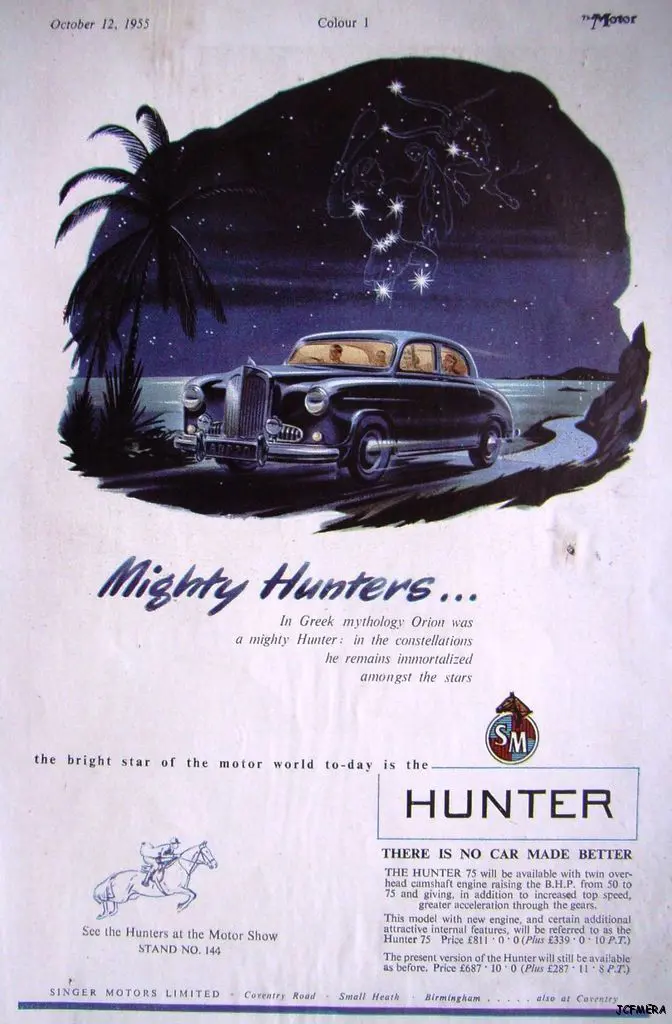OVERLOOKED GEMS – THE SINGER SM1500 AND HUNTER
16 November 2023
Amidst the many and varied cars displayed at the 1948 London Motor Show was a formal-looking saloon that offered "dignity, style and perfect balance". The SM1500 was Singer's first post-war design, and today it merits far greater recognition.
The SM1500 was powered by a chain-driven SOHC unit, and the slab-sided coachwork, with its lack of running boards and quasi-Detroit radiator grille, bore no resemblance to any previous Singer. The 1946 Kaiser-Frazer was apparently a design inspiration. Domestic customers needed to add their names to a long waiting list as full production commenced in 1949, and Singer reserved the first models for "Export Only".

By 1951, the 1,506cc engine was reduced to 1,497cc, and twin carburettors became available the following year, but the SM1500 never enjoyed the success that might have been its due. It was an expensive car by the standards of the day, and its styling quickly dated. Singer responded with a significant update in 1954, with the Hutner replacing the SM1500. Here was a car "'for the connoisseur who likes his spirited motoring in comfort", and the rather lavish specification included a heater, fog lamps and windscreen washers, with a fitted tool tray incorporated in the boot.
For additional distinction, the Hunter sported an upright radiator grille with a horsehead mascot. The following year, Singer introduced the Hunter 75 with a DOHC engine and the stripped-spec 'S' sans clock, heater, auxiliary lamps and even a spare wheel! Mention should also be made of the Hunter's guest appearance in Fire Maidens of Outer Space, a 1956 British B-Film in which the 13th moon of Jupiter bears a startling resemblance to Chobham Common.
But it was all to no avail. By 1955, Singer made just 30 cars per week, and in January of the following year the Rootes Group acquired the famous Coventry marque. Eight months later, the Gazelle combined the Hillman Minx 'Audax' body with the Singer SOHC plant. Meanwhile, the 1956 Hunter De Luxe represented the last vestiges of Singer's independence, and Motor Sport found it:
one of the nicest Rootemobiles we have yet tried. At the all-in price of £863 17s it represents keen value for a class of car, very fully equipped and offering a sense of luxury with fair performance, which is encountered only infrequently amongst post-war models.
But by 1958, the Gazelle IIA was Hillman-powered, and 12 years later the Singer name was no more after a badge-engineered twilight. Those who encounter the SM1500 and Hunter are often surprised by their sheer integrity. As I wrote in Classic and Sports Car a few years ago:
The sheer quality and attention to detail in the Hunter is palpable and its lack of commercial success was quite possibly due to it not being in accord with the growing consumer trend of 'live now, pay later'. By the late 1950s, too few motorists were prepared to look beyond those now very dated looks and, after Singer became a part of the Rootes empire, the potential of the brand was never properly exploited.
